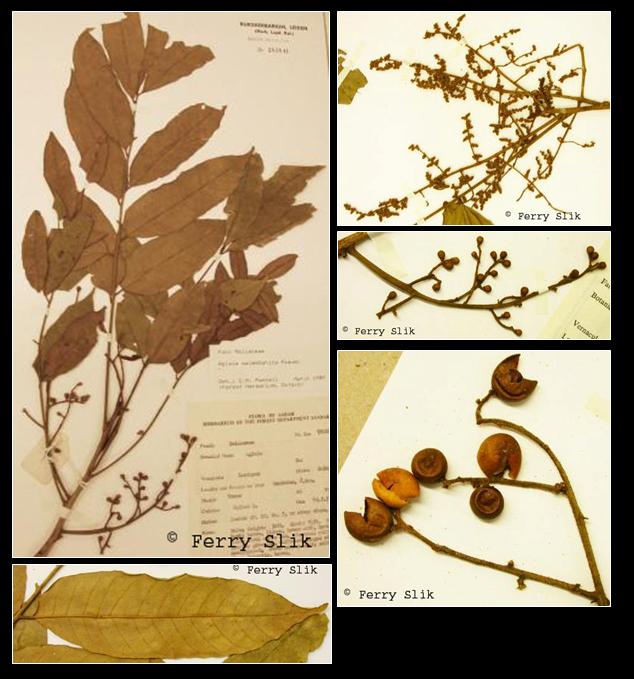Aglaia palembanica Miq., Fl. Ind. Bat. Suppl. 1 (1861)
Latin for 'from Palembang', a location in Sumatra.Synonyms
Aglaia pamattonis Miq.
Aglaia sipannas Miq.
Description
Tree up to 21 m tall and 30 cm dbh, with an irregularly rounded crown. Twigs slender, densely covered
with brown stellate hairs which have arms up to 0.7 mm long. Leaves up to 36 cm long
and 25 cm wide; petiole up to 10 cm, petiole, rachis and petiolules densely covered with
hairs like those on the twigs. Leaflets 9-13, 6-22.5 by 1.3-3.5 cm, the margin slightly
wavy and recurved when dry, caudate or acuminate at apex, cuneate and sometimes
rounded on one side at the asymmetrical base, with stellate hairs like those on the twigs
evenly scattered on lower surface and some paler stellate scales or peltate scales with a
long fimbriate margin interspersed; veins 9-13 on each side of the midrib, some reticulation
visible on lower surface; petiolules up to 8 mm. Inflorescence up to 30 cm long
and wide, the final branches up to 10 mm long and tightly packed with sessile flowers,
the branches clothed like the twigs. Flowers c. 1.2 mm long, subglobose or slightly
longer than broad. Calyx with few or many pale brown stellate hairs on the outer surface.
Petals 5. Staminal tube c. 0.8 mm long, cup-shaped with the apical margin incurved;
anthers ovoid about half the length of the tube and just protruding beyond the aperture.
Infructescence up to 10 cm long. Fruits subglobose, up to 4 mm long, brown or
red. the pericarp thin and brittle and with few hairs like those on the twigs. Seeds with
white aril. [from Flora Malesiana]
Ecology
Found on flood plains, along river banks and in primary and secondary
forest; on clay, laterite, sandstone, sand, limestone; sealevel to 900 m altitude.
Distribution
Peninsular Thailand, Peninsular Malaysia, Sumatra, Borneo, Philippines, Celebes.
Local names
Borneo: Koping-koping, Lampasek, Lantupak, Segera.
